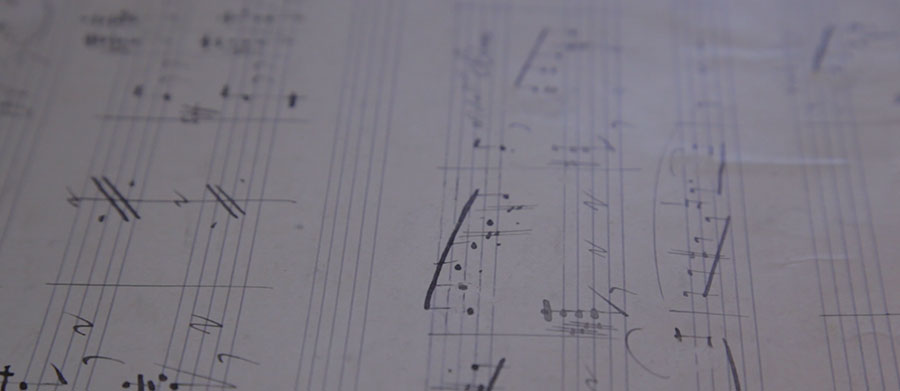
In my newsletter last month, I talked about how I need to get the score for my great grandfather’s long lost opera in performable shape– if we’re ever going to have a shot at hearing what it sounds like. And that means creating what’s called a computer engraved version. But right now, all we have is an 80 year old handwritten manuscript.
So step one is creating a digital scanned version of the manuscript itself.
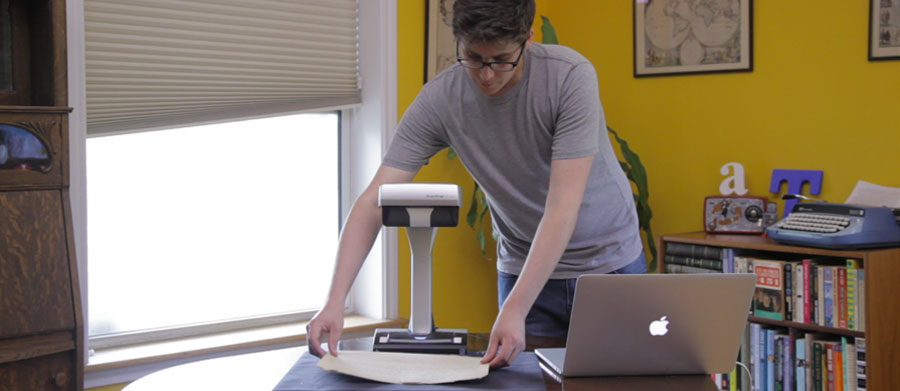
Since this antique sheet music is larger than a normal sheet of 8.5″ x 11″ paper, it won’t fit on a normal flatbed scanner. I used a special kind of book scanner, which projects a light beam on to the pages. It’s a little bit like something out of Star Wars.

Music scanned? Check. And that’s where I ran into a dead end. I don’t know the first thing about music so I needed help. Luckily, I was able to enlist the help of a local expert!
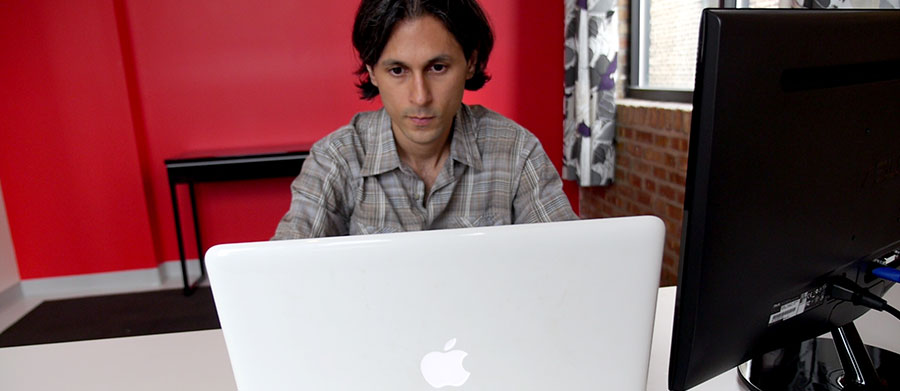
Meet Dr Pablo Chin. Pablo is a composer himself from Latin America (just like my great grandfather was!). And he’s helping us out by transcribing the handwritten score into a computer version that can actually be performed. It’s not easy reading faded ink and tiny handwriting, but he’s doing a fantastic job.
With the digital scanned version of the score, Pablo can zoom in to read tiny notations in the score that would otherwise be unintelligible, or tough to read even with a magnifying glass.
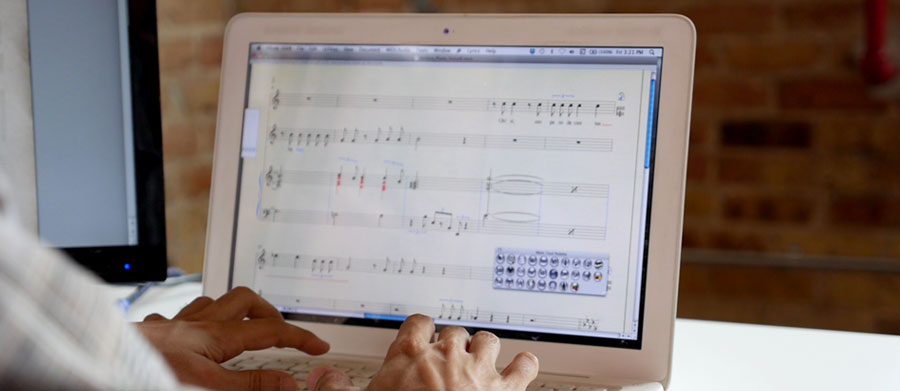
And here’s the fruit of his labor, printing out for the first time:
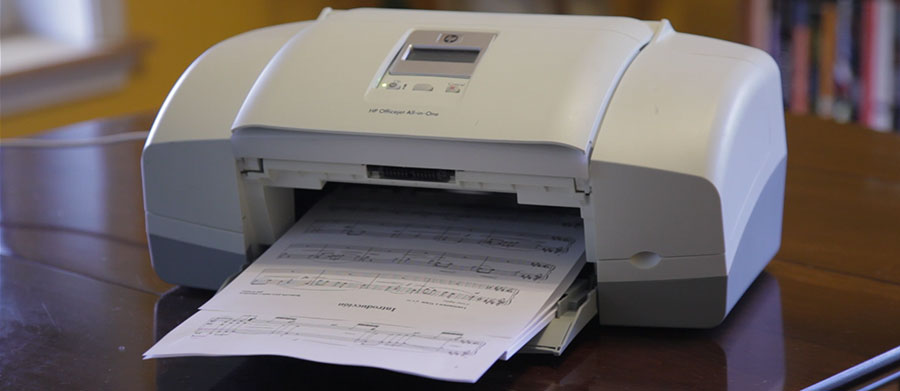
Nice!
Next month, I’ll share with you some more of this journey to get this opera performed for a world premiere, 80 years after it was written. Who knows, I might even have some good news to share. But that’s all for now.
Arlen
